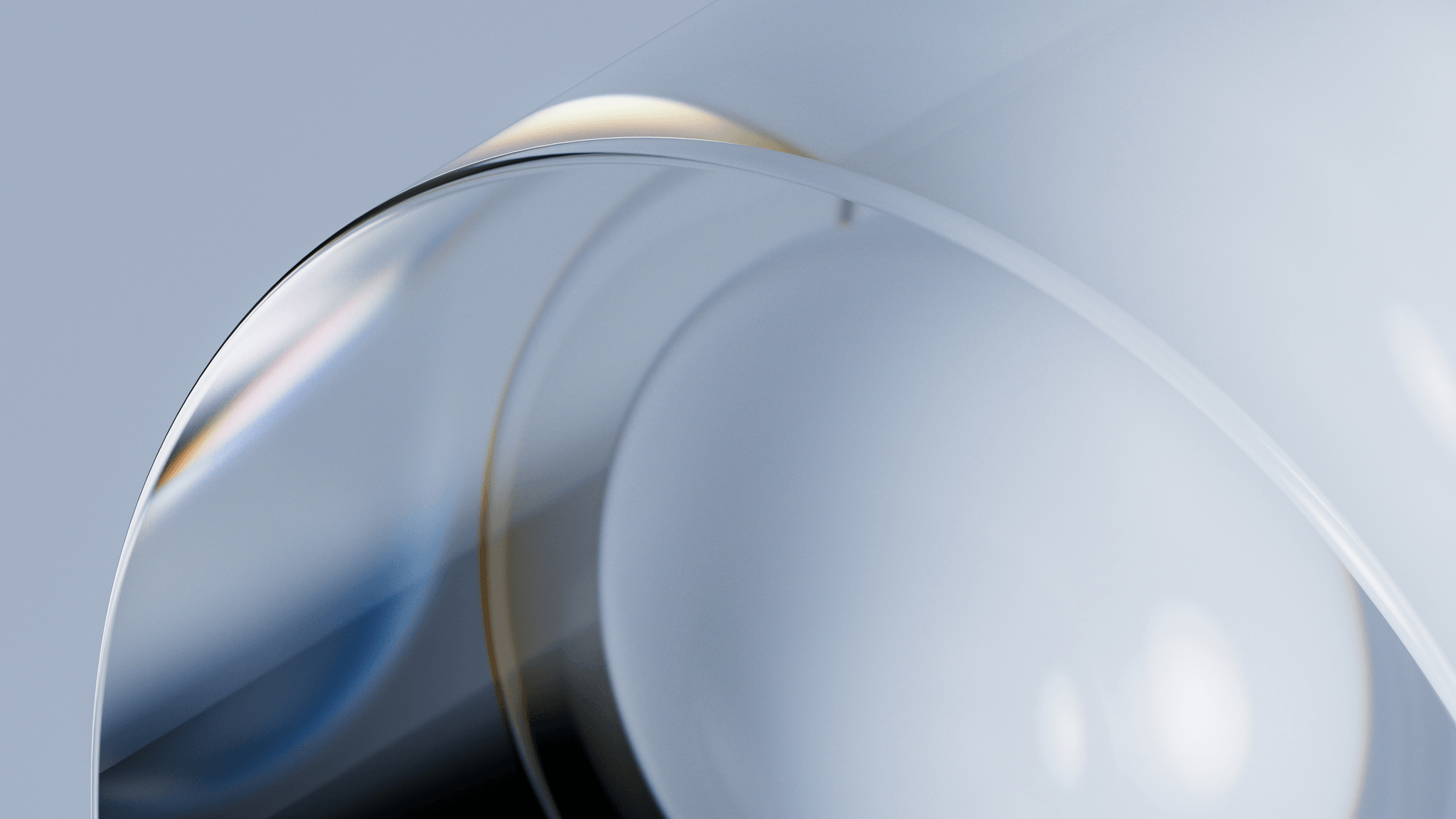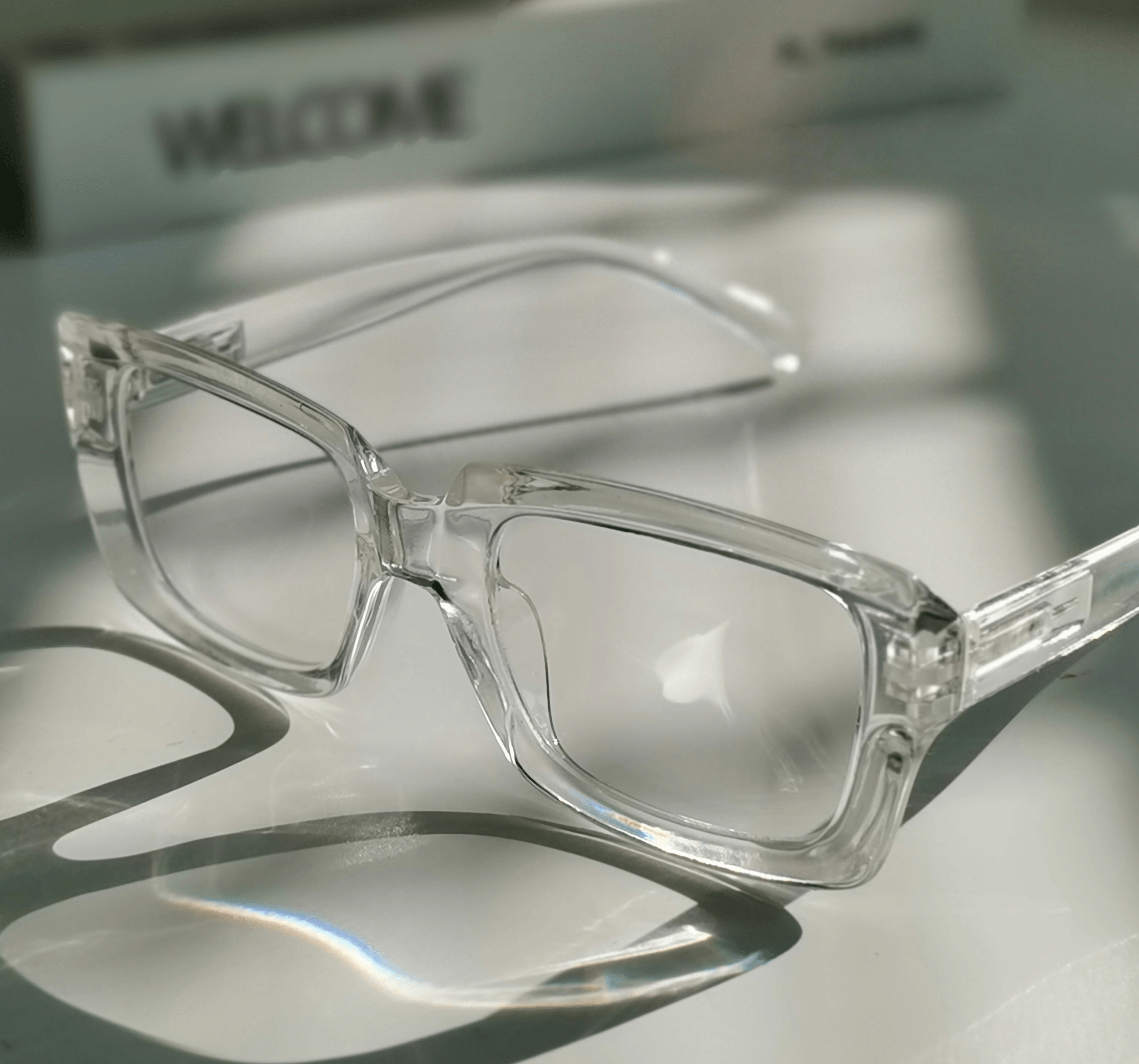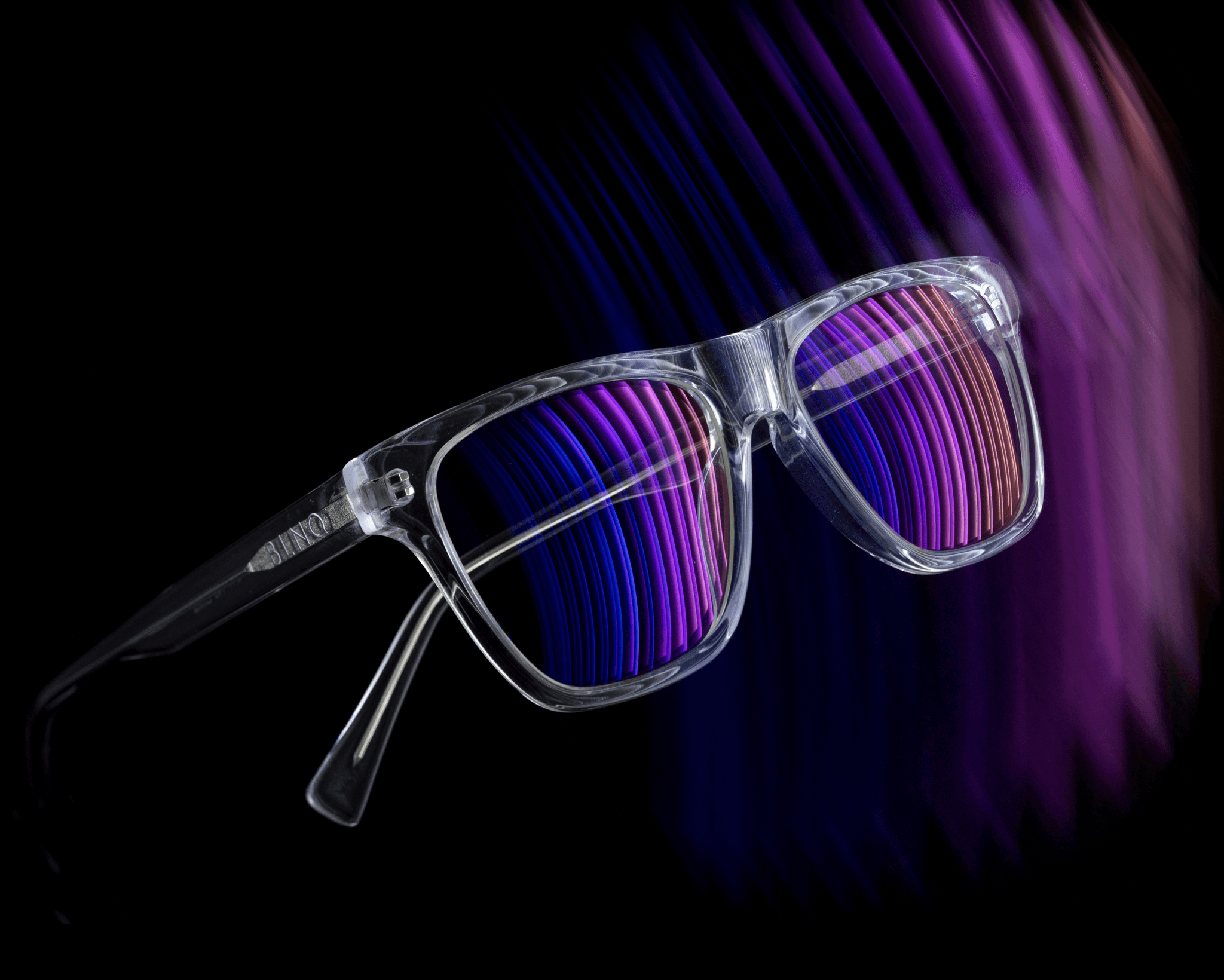Introduction

Choosing the right lens material for your glasses can feel like navigating a maze of options, each promising clarity and comfort. With so many types of glasses lens material available, understanding the differences is crucial to finding what suits your needs best. Whether you’re asking yourself, “What is the best material for eyeglass lenses?” or simply curious about the various choices out there, this guide will illuminate your path.
Understanding Lens Materials for Glasses
Glasses are more than just a fashion statement; they are essential tools that enhance our vision and protect our eyes. The material from which eyeglass lenses are crafted significantly impacts their weight, durability, and visual quality. From polycarbonate to high-index plastic, knowing what material eyeglass lenses are made of can help you make informed decisions tailored to your lifestyle.
Importance of Choosing the Right Material
Selecting the right lens material isn’t just about aesthetics; it’s about functionality too. Different materials cater to varying prescriptions and activities—some may be ideal for sports enthusiasts while others suit everyday wearers better. By understanding which type of eyeglass lenses are best for you, you can ensure that your eyewear enhances both comfort and performance.
Overview of Popular Lens Types
When diving into the world of ophthalmic lens materials, it's essential to familiarize yourself with popular options like polycarbonate, high-index plastic, glass, CR-39 plastic, and Trivex lenses. Each type has its own unique features that cater to specific needs—be it lightweight comfort or superior optical clarity. This guide will break down these materials in detail so you can confidently choose the best lens material for glasses that fits your lifestyle.
Polycarbonate Lenses

Polycarbonate lenses have gained popularity in the eyewear industry, and for good reason. These lenses are made from a thermoplastic material that is both lightweight and incredibly durable, making them a favorite among those seeking comfort without sacrificing performance. If you're wondering about the types of glasses lens material available, polycarbonate is definitely one of the top contenders.
What are Polycarbonate Lenses?
Polycarbonate lenses are crafted from a specific type of plastic known for its high impact resistance and optical clarity. This material is often used in safety glasses, sports eyewear, and children’s glasses due to its robust nature. When considering what is the best material for eyeglass lenses, polycarbonate frequently comes to mind thanks to its unique combination of strength and lightweight properties.
Benefits of Polycarbonate Material
One of the standout benefits of polycarbonate material is its incredible durability; it can withstand significant impacts without shattering or cracking. Additionally, these lenses are lighter than traditional glass options, providing a comfortable fit for all-day wear—especially important if you’re asking what type of eyeglass lenses are best for prolonged use. Plus, many polycarbonate lenses come with built-in UV protection, making them an excellent choice for outdoor activities while ensuring your eyes stay safe from harmful rays.
Best Uses for Polycarbonate Lenses
Polycarbonate lenses shine in various applications due to their versatility; they are ideal for sports enthusiasts who need reliable eyewear that can handle rough conditions without breaking easily. They’re also perfect for children’s glasses—after all, kids can be tough on their belongings! If you're exploring ophthalmic lens materials or trying to decide which type suits your lifestyle best, consider polycarbonate as an excellent option for both everyday use and specialized activities.
High-Index Plastic Lenses

High-index plastic lenses are a popular choice for those looking to combine style with functionality in their eyewear. These lenses are made from a special type of plastic that has a higher refractive index than standard lenses, allowing them to be thinner and lighter while maintaining effective vision correction. When considering the various types of glasses lens material, high-index plastic stands out as an excellent option for many wearers.
What is High-Index Plastic?
High-index plastic is a lens material specifically designed to bend light more efficiently than traditional materials. This means that the lenses can be made thinner without sacrificing optical quality, making them ideal for stronger prescriptions. If you've ever wondered what material eyeglass lenses are made of, high-index plastic offers an innovative solution that balances aesthetics with performance.
Advantages of High-Index Lenses
One of the primary advantages of high-index lenses is their lightweight nature, which enhances comfort during prolonged wear—perfect for those who find heavier glasses cumbersome. Additionally, these lenses typically have improved optical clarity and reduced distortion at the edges compared to lower index options, making them an excellent choice for those seeking superior vision correction. In terms of aesthetics, high-index plastic allows wearers to enjoy stylish frames without the bulk often associated with thicker lens materials.
Who Should Choose High-Index Material?
Individuals with moderate to strong prescriptions will benefit most from choosing high-index material due to its ability to produce thinner and lighter lenses while still providing excellent vision correction. If you're someone who prioritizes comfort and style in your eyewear, this lens type could be your best bet among the various types of glasses lens material available today. Whether you're searching for what is the best material for eyeglass lenses? or what type of eyeglass lenses are best?, consider high-index options as a top contender in your Lens Index & Material Guide.
Glass Lenses

When it comes to types of glasses lens material, glass lenses are often the classic choice. Known for their superior optical clarity, glass lenses have been a staple in eyewear for many years. They provide excellent vision correction and are less prone to scratching compared to some plastic alternatives, making them a favorite among those who prioritize durability and clarity.
Characteristics of Glass Lenses
Glass lenses stand out due to their high optical quality and resistance to scratches, which is why many people wonder what material eyeglass lenses are made of when considering their options. They typically have a higher lens index than standard plastic lenses, which means they can be made thinner without sacrificing strength or clarity. However, they tend to be heavier than other materials, which can impact comfort for extended wear.
Pros and Cons of Glass Material
Like any material in the Lens Index & Material Guide, glass has its pros and cons. On the plus side, glass offers exceptional scratch resistance and superior visual acuity—making it one of the best lens materials for glasses if you want crystal-clear vision. On the downside, they are more fragile than plastic options and can shatter upon impact; also, their weight may not be suitable for everyone’s comfort preferences.
When to Opt for Glass Lenses
Choosing when to opt for glass lenses often depends on your lifestyle and visual needs. If you require high-definition vision correction or work in environments where scratch resistance is paramount (like laboratories), glass could be your best bet among types of glasses lens material available today. However, if you're active or frequently on-the-go, consider lighter alternatives that might better suit your needs without compromising on quality.
CR-39 Plastic Lenses

When it comes to types of glasses lens material, CR-39 plastic is a popular choice among eyewear enthusiasts and opticians alike. This lightweight and durable material has been a staple in the optical industry for decades, making it an excellent option for various prescriptions. If you're wondering, What is the best material for eyeglass lenses?, CR-39 often tops the list due to its balance of performance and affordability.
What is CR-39 Plastic?
CR-39 plastic, originally developed during World War II as a lightweight alternative to glass, has since become one of the most common materials used in ophthalmic lenses. It is a thermosetting plastic that offers excellent optical clarity and is known for its impact resistance—making it ideal for everyday use. When asking What are the 3 types of lenses for glasses?, it's crucial to note that CR-39 serves as one of these foundational options alongside polycarbonate and high-index lenses.
Key Benefits of CR-39 Material
One significant advantage of CR-39 material is its remarkable clarity, which allows wearers to experience crisp vision without distortion. Additionally, this type of lens material is relatively affordable compared to other options like high-index or glass lenses, making it accessible for many consumers seeking value without sacrificing quality. Furthermore, when considering what type of eyeglass lenses are best for you, keep in mind that CR-39 offers excellent scratch resistance when treated with a hard coating.
Ideal Situations for CR-39 Lenses
CR-39 lenses are perfect for individuals who require standard prescriptions but still want quality eyewear at an economical price point. They work exceptionally well in everyday situations—whether you're reading at home or navigating through your daily commute—thanks to their lightweight nature and comfort fit. If you're exploring the Lens Index & Material Guide while pondering over the best lens material for glasses suitable for your lifestyle needs, you'll find that CR-39 fits seamlessly into many scenarios.
Trivex Lenses

Trivex lenses are a popular choice among eyewear enthusiasts and those seeking durable, lightweight options. Made from a unique polymer, these lenses provide excellent optical clarity and impact resistance. If you're pondering what is the best material for eyeglass lenses, Trivex might just tick all the boxes.
What are Trivex Lenses?
Trivex lenses are crafted from a specialized material that combines the best features of both plastic and polycarbonate lenses. Known for their lightweight nature, they offer superior comfort for all-day wear, making them an attractive option for various types of glasses lens material. When considering what type of eyeglass lenses are best, Trivex stands out due to its impressive balance of performance and comfort.
These lenses were originally developed for military applications but have since made their way into everyday eyewear. They provide enhanced visual acuity while being remarkably thin and light compared to traditional glass or even some plastic alternatives. This makes them ideal for individuals looking for a high-performance lens without the added weight.
Unique Features of Trivex Material
One of the standout features of Trivex material is its exceptional impact resistance, making it an ideal choice for active lifestyles or occupations that require safety eyewear. Unlike standard plastic options, which may shatter upon impact, Trivex offers peace of mind with its robust design—perfectly aligning with those who prioritize safety in their selection process when exploring types of glasses lens material.
In addition to durability, Trivex also boasts excellent optical clarity similar to higher-index materials but without compromising on thickness or weight. This means you can enjoy crisp vision while wearing lighter frames—a win-win situation! Plus, it has built-in UV protection that shields your eyes from harmful rays, further enhancing its appeal as one of the best lens materials for glasses.
Lastly, another unique feature is its compatibility with various coatings and tints—allowing customization according to personal style or specific needs like anti-reflective coatings or photochromic treatments. This versatility makes it easier than ever to find what type of eyeglass lenses are best suited for you.
Best Applications for Trivex Lenses
Trivex lenses shine in several applications due to their remarkable properties! They’re particularly well-suited for children’s eyewear thanks to their lightweight nature and high durability; after all, kids can be rough on their glasses! Additionally, they’re fantastic choices for sports goggles or safety glasses where impact resistance is paramount—making them one of the top picks when considering ophthalmic lens materials.
For those who require progressive or bifocal prescriptions but want something lighter than traditional glass options—Trivex provides a comfortable solution without sacrificing visual quality! If you often find yourself asking what are the 3 types of lenses for glasses? Rest assured that including Trivex in your considerations will elevate your choices significantly.
In summary, if you're searching through a Lens Index & Material Guide trying to figure out which type will enhance your eyewear experience while ensuring safety and comfort—look no further than Trivex! This innovative material checks off many boxes on your list: lightweight construction, exceptional clarity, and unparalleled durability make it hard to resist!
Photochromic Lenses

Photochromic lenses are a fantastic innovation in eyewear, designed to adapt to changing light conditions. When exposed to UV rays, these lenses automatically darken, providing a convenient solution for those who frequently transition between indoor and outdoor environments. Essentially, they combine the benefits of regular glasses with the functionality of sunglasses, making them a versatile choice among the various types of glasses lens material available today.
What are Photochromic Lenses?
Photochromic lenses are made from specially treated materials that react to UV light. This means that when you step outside into bright sunlight, the lenses darken to protect your eyes from harmful rays; when you go back indoors, they return to their clear state. If you're pondering what is the best material for eyeglass lenses in terms of convenience and protection against glare, photochromic options definitely stand out.
Benefits of Photochromic Materials
One of the key benefits of photochromic materials is their ability to provide all-day comfort without needing multiple pairs of glasses. Whether you're driving on a sunny day or working at your desk under artificial lighting, these lenses adjust accordingly—eliminating the hassle of switching between prescription sunglasses and regular glasses. Additionally, photochromic lenses offer 100% protection against harmful UV rays and can reduce eye strain significantly; this makes them one of the best lens materials for glasses available.
Who Needs Photochromic Lenses?
Photochromic lenses are ideal for anyone who spends significant time outdoors or transitions frequently between different lighting environments. If you find yourself asking what type of eyeglass lenses are best for your active lifestyle or if you're simply tired of carrying around multiple pairs of glasses, these may be just what you need! They cater especially well to individuals with light sensitivity or those who engage in outdoor activities like hiking or cycling—truly an excellent choice among ophthalmic lens materials.
Conclusion
Choosing the right lens material can feel like navigating a maze with no exit, but fear not! With a little guidance, you can find the best material for your eyeglass lenses that suits your lifestyle and visual needs. From polycarbonate to high-index plastic and CR-39, understanding the types of glasses lens material available will help you make an informed decision.
Choosing the Best Lens Material
What is the best material for eyeglass lenses? The answer often lies in your specific requirements. If you lead an active lifestyle or need lightweight options, polycarbonate or Trivex may be ideal choices; however, if you prioritize superior optical clarity, high-index plastic or glass could be more suitable.
Key Factors to Consider
When deciding on what type of eyeglass lenses are best for you, consider factors such as weight, durability, and prescription strength. For instance, high-index lenses offer thinner profiles for stronger prescriptions while maintaining a lightweight feel—perfect for those who dislike heavy frames. Also think about any additional features like photochromic capabilities that enhance functionality based on your daily activities.
Enhancing Your Eyewear Experience with Daposi
Daposi offers a variety of options tailored to meet diverse needs in ophthalmic lens materials and styles. By exploring their extensive collection of lens materials and coatings, you'll discover how easy it is to enhance your eyewear experience without compromising comfort or style. Remember: informed choices lead to happier eyes!
